Comments (1)
Add Comment
-
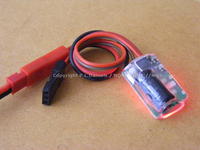 Views: 394
Views: 394
PLD-BEC-1A topside, showing the large low-ESR decoupling cap and the smaller caps for stablising the regulator. You can see the glow of the ON-LED -
 Views: 325
Views: 325
PLD-BEC-1A bottom side. The 5V power LED is clearly visible. The BEC accepts JST-2pin connector input and provides a receiver 3pin plug output. -
 Views: 326
Views: 326
"Honest 4.6g weight". If you drop the leads you can expect to see a 2g saving.
-
 Views: 384
Views: 384
Testing the new ESJ-8CH for quiescent current, output voltage and ripple -
 Views: 302
Views: 302
Close up view of the portable scope showing some tiny ripple on the BAC-1A and the Protek giving the output voltage. -
 Views: 324
Views: 324
The new PLD BEC-1A, low ripple (1mV or less), low weight, very simple for 2S or 3S lipos.
-
 Views: 436
Views: 436
The hard working parts, the 2R2 resistor with the LM317 regulator form the ~500mA constant current source. Note the 4-wire kelvin leads. The LCD just plugs on/off to the PCB, allowing easy access if required. -
 Views: 357
Views: 357
The LOM in use, the H: and L: figures are purely for debugging, the R: value is the resistance being measured in milliohms -
 Views: 351
Views: 351
The 'brains' side of the board, includes a precision 1% 5V supply and an Atmel mega48 AVR (great chips)
-
 Views: 351
Views: 351
Bare circuit board out of the etch tank (double-sided) -
 Views: 363
Views: 363
Board populated with electronics. The black headers are for when I get the proper LCD panel and it'll just plug in on top -
 Views: 356
Views: 356
Meter turned on, no cell to test yet -
 Views: 394
Views: 394
Measuring one cell on the 2S pack. Resistance is 43mR (0.043R) -
![Name: picDSCF0031.jpg
Views: 337
Size: 108.6 KB
Description: Different battery pack, this one is worse, 57mR, it's a fairly old pack now and well [ab]used :D Name: picDSCF0031.jpg
Views: 337
Size: 108.6 KB
Description: Different battery pack, this one is worse, 57mR, it's a fairly old pack now and well [ab]used :D](https://static.rcgroups.net/forums/attachments/2/4/1/8/1/t2264784-70-thumb-picDSCF0031.jpg?d=1231331260) Views: 337
Views: 337
Different battery pack, this one is worse, 57mR, it's a fairly old pack now and well [ab]used :D
-
 Views: 270
Views: 270
blank piece of mylar with backing tape -
 Views: 240
Views: 240
Cutting in progress -
 Views: 235
Views: 235
Finished job from the vinyl cutting machine -
 Views: 268
Views: 268
Peeling the backing paper off pulls away some of the cutouts, a good sign -
 Views: 273
Views: 273
Finished job, ready for use with solder paste. -
 Views: 287
Views: 287
Fresh electronic cookies from the oven
-
 Views: 325
Views: 325
PLD-ESJ-CHG series showing the ESJ unit (center), 2 pin jumper (lower) and charge port (upper) -
 Views: 292
Views: 292
-
 Views: 282
Views: 282
ESJ unit activated (jumper removed). Orange LED indicates the unit is active (eg power is switched on) -
 Views: 273
Views: 273
4g weight will be hardly noticed in most airframes -
 Views: 321
Views: 321
Mountain Models Cessna 180 with ESJ unit installed -
 Views: 294
Views: 294
Cessna showing the charger port on the trailing edge. Here the 2S lipo is being charged (note that the 2 pin jumper is inserted to disable the unit) -
 Views: 287
Views: 287
Closeup of the ESJ installed in the cessna. Only two tiny holes are required in the covering to let the two pins of the jumper though. The ESJ is installed using a dot of hotglue to hold it to the airframe in this case.
 (EDIT: Both prizes are won, but you can still enter for the 3-montly big prize by building up your glory-points).
(EDIT: Both prizes are won, but you can still enter for the 3-montly big prize by building up your glory-points).



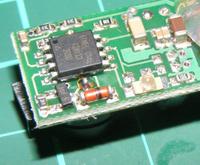







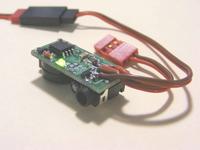

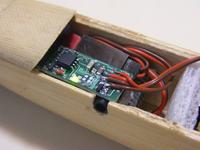

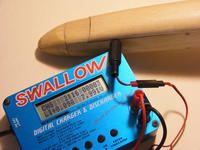








 Since I've just finished working on the whole production run of the battery internal resistance meter ( IRM-004;
Since I've just finished working on the whole production run of the battery internal resistance meter ( IRM-004; 

 ), then you're going to need solder paste stencils.
), then you're going to need solder paste stencils.



















